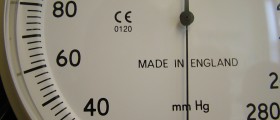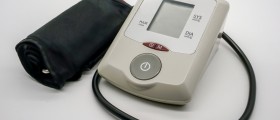
High blood pressure is a chronic medical condition in which the systemic arterial blood pressure is above the normal levels. This condition is also known as hypertension. Blood pressure is a force at which blood pushes against the walls of the arteries as the heart pumps out blood. If this pressure is high and remains elevated over a prolonged period, it can damage the body. It is estimated that approximately 26% of adult people all over the world, suffer from hypertension.
Causes of high blood pressure
Hypertension comes in two different forms: primary and secondary. Primary hypertension refers to all cases of high blood pressure for which no medical reason can be found. Almost 90-95% of all cases of high blood pressure are classified as primary hypertension. Secondary hypertension is caused by other underlying medical conditions. This kind of hypertension occurs suddenly, and it can be caused by kidney problems, adrenal gland tumors, congenital defects in blood vessels, as a result of taking certain medications (control pills, cold remedies, decongestants, over-the-counter pain relievers and some prescription drugs), or as a result of illegal drug abuse (especially cocaine and amphetamines).
Symptoms of high blood pressure
A great majority of people with high blood pressure has no signs or symptoms of this condition. At the early stage, most of them may feel dull headaches, dizzy spells or nosebleeds. This disease is an actual silent killer as the first symptoms normally do not occur until high blood pressure has reached a severe, even life-threatening stage. Symptoms of high blood pressure are fatigue, nausea, vomiting, shortness of breath, restlessness, confusion and blurred vision. All of the symptoms occur as a result of damage to the organs. In extremely rare cases, hypertension causes brain swelling, which can lead to drowsiness and coma.
Diagnosis
Hypertension is generally diagnosed based on blood pressure measurements. Blood pressure is measured with an inflatable arm cuff and a pressure-measuring gauge. A reading is given in millimeters of mercury (mm Hg), and it has two numbers. The first number measures the pressure in the arteries as the heart beats (systolic), and the lower measures the pressure between the beats (diastolic). Normal blood pressure is below 120/80 mm Hg. Pre-hypertension is a systolic pressure ranging from 120 to 139 mm Hg or a diastolic pressure ranging from 80 to 89 mm Hg. Stage 1 hypertension is a systolic pressure ranging from 140 to 159 mm Hg or a diastolic pressure ranging from 90 to 99 mm Hg. The most severe hypertension is stage 2 hypertension, characterized by a systolic pressure of 160 mm Hg or higher or a diastolic pressure of 100 mm Hg or higher.

















Your thoughts on this
Loading...